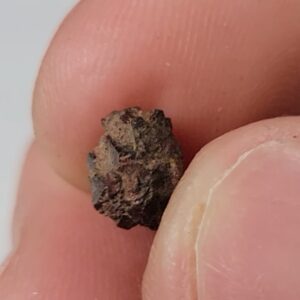Description
Cassiterite has a hardness of 6 – 7 and a specific gravity of 6.98 – 7.01, and Zinnwaldite has a hardness of 3.5 – 4.0 and a specific gravity of 2.9 – 3.1. Cassiterite is named after the Greek kassiteros for “tin” and has been a primary ore for the metal since the Bronze Age. Zinnwaldite was first described in 1845, but was discredited (in 1998?) and instead identified as Polylithionite.
Zinnwald, even, was named after a major Tin deposit was discovered, and has been the location of a mine that’s been worked for thousands of years to extract Tin, and especially now, for Lithium.
Cassiterite has been found “in medium- to high-temperature hydrothermal veins and greisens and alluvial placers” in thousands of locations on every Continent, according to Mindat.
Meanwhile, Zinnwaldite has been found in maybe a thousand locations, and is often mined for Lithium, and for its Rubidium content – sometimes as high as 1%!
As a natural representation of those elements, this specimen would make for a great sample for element collectors, but otherwise, its Tin, Rubidium, Potassium, Lithium and Aluminum aren’t of significant economic value. However, if you keep your eye out for a rock like this on your next hike, you’ll now know what you’re looking at!








Reviews
There are no reviews yet.